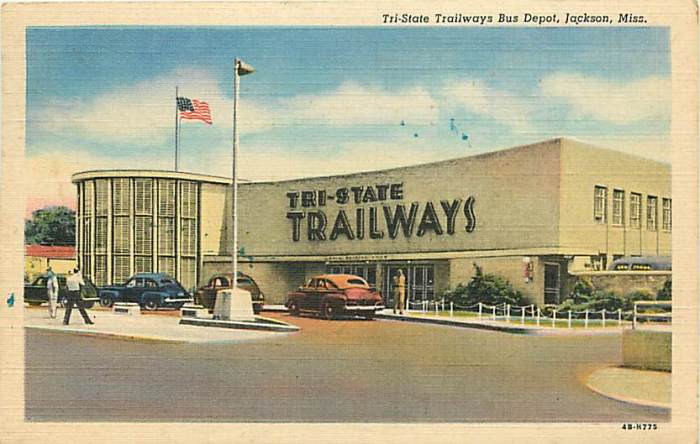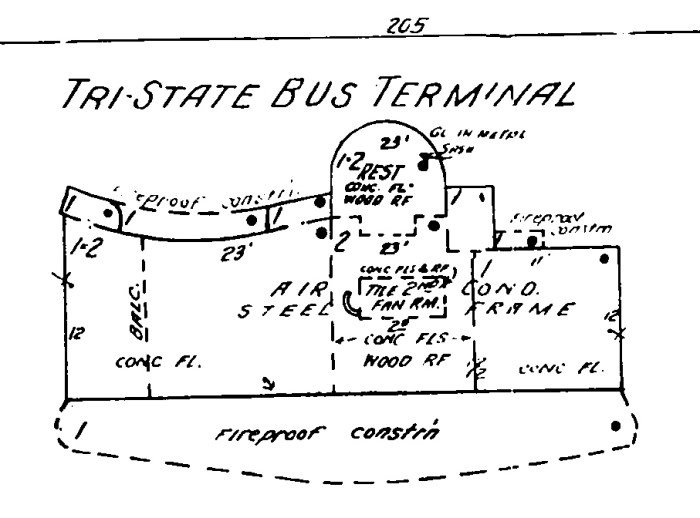Those of you who watched last night’s excellent and evocative PBS American Experience documentary “Freedom Riders” saw clips of the riders walking into Jackson’s Tri-State Trailways station and then walking almost right back out into the police wagon to be taken to Parchman. The Trailways bus station is one that I wish I had been around to see, based purely on its curvy Modernist aesthetic. Unfortunately, it was demolished in 1976 to make way for the Davis Planetarium and the extension of Lamar Street, before anyone (at least anyone in power) cared to preserve either Modernism or Civil Rights sites.
Now in hindsight, we can see what a loss that was for both the architecture and the history of the city and the state. While we can see how this blind spot existed back in the 1970s, it’s hard to understand how even today demolition of the A&I buildings at the State Fairgrounds continues, another demolition of a civil rights site brought to you by the State of Mississippi.
 Designed by our old friend R.W. Naef, the station was built around 1940–can you imagine how shockingly sleek this must have looked in downtown Jackson before World War II?
Designed by our old friend R.W. Naef, the station was built around 1940–can you imagine how shockingly sleek this must have looked in downtown Jackson before World War II?

Speaking of Modernism and old friends, you might have also caught in the documentary during the footage of the freedom riders being loaded into the wagon, a glimpse of the Petroleum Building across the street and its folded plate (or was it wavy?) entrance awning. I wish I could find a screenshot of it, but you should watch the film anyway for the amazing story it tells and the video footage and photographs that bring it all to life.
Categories: Architectural Research, Civil Rights, Demolition/Abandonment, Depots, Jackson

Wonderful PBS programing….hope every child and adult will take the time to view this historic film.
LikeLike
I also remember the Tri State Trailways Station, the place I so often began and ended trips to Mexico with my high school students of Spanish. Had the building been saved I agree it would have made a wonderful civil rights museum.
LikeLike